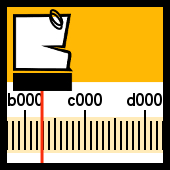ABOUT ERRORS OF PLANNING "FROM WHAT WAS ACHIEVED"
About errors of planning from what was achieved
A typical question from the Forum:
"The general director sets a plan of sales for us every month based on the principle of "what was achieved". It so happens that the more my subordinates and I work, the higher the plan is set and as a result, our bonuses are reduced.
This is not whining. Objectively, the plan was constantly achieved for these months, the sales department of our publishing house never made so much money from sales before my arrival, a comparative analysis for the last 5 years has shown that there was a raise in the plan by a factor of two.
But I am worried that I will not have any more options to motivate the employees. The director is insisting on raising the tariffs etc. But for the time being, I do not... have enough wits to explain that it is not correct".
Our answer:
Planning from "what was achieved" – is a mistake. When using such a "method", the employee should sell more and more for the same salary – why would that motivate him? As soon as he achieves the plan or "naively" overdoes it (getting overpaid a little), the management will immediately raise the bar (in turn, insuring from overspending the wages fund).
There can be an analogous situation at a manufacture. Here, the planning "from what was achieved" occurs as a reduction in the rates, which were set for a piecework remuneration system. Since following a raise in labor productivity, there is a raise in the factual salary of the workers. But, unfortunately, very often, as a reciprocal step for each produced unit the employee will be paid less. Consequently, he will have to work more to get the same money he received before. This means that a halt in the growth of productivity will not only be inevitable, but also morally justified.
Frederick Taylor (The father of Scientific Management) noted in 1886 that: "The worker understands that: if the head of the enterprise is sure that one person can produce a larger income per day than he is actually producing, then sooner or later, he will find a way to compel him to the corresponding raise in income for the company with an insignificant raise or without any raise at all in the worker’s salary".
[Source: Taylor F.W. The scientific organization of labor. – M. – 1925. Translated by A.I. and B.Y. Zak]
Good intentions in raising productivity of employees for a piecework remuneration system, finally does not lead to stimulation, but on the contrary to demotivation. When in the second half of the month the workers understand that the plan will be met, they start to:
- Decrease the work rate,
- "Transfer the Clients" to the next period (when there is such an option),
- "blow" Clients, i.e. indirectly refusing (especially when there are many Clients).
A plan, either for sales, or for income, should be set based on the frames of a technology (way, method) of work, and not from the principle of "what was reached". And only a change in technology for which there are significant results reached with less efforts than before can justify a raise in tasks.
Productivity is determined to a larger extent by the general level of the organization of work general level of the organization of work and to a lesser extent by other factors. The actual raise in
Productivity is achieved due to invention, innovative proposals and good management. If at a specific enterprise it is not the case, then the management is bad there.
With a good management, the command "come on" seems as awkward as the request to the pilot of a passenger plane to fly faster. Much time will not be gained but killing oneself is possible. In a specific type of plane, the speed is controlled by the operating rules, flight regulations etc. In order to fly faster, you need another plane or another applicable regulation.
What concerns the question how to motivate employees to high productivity in reality and how to organize a successful company, read the methodical materials and discussions, which are linked below.
















